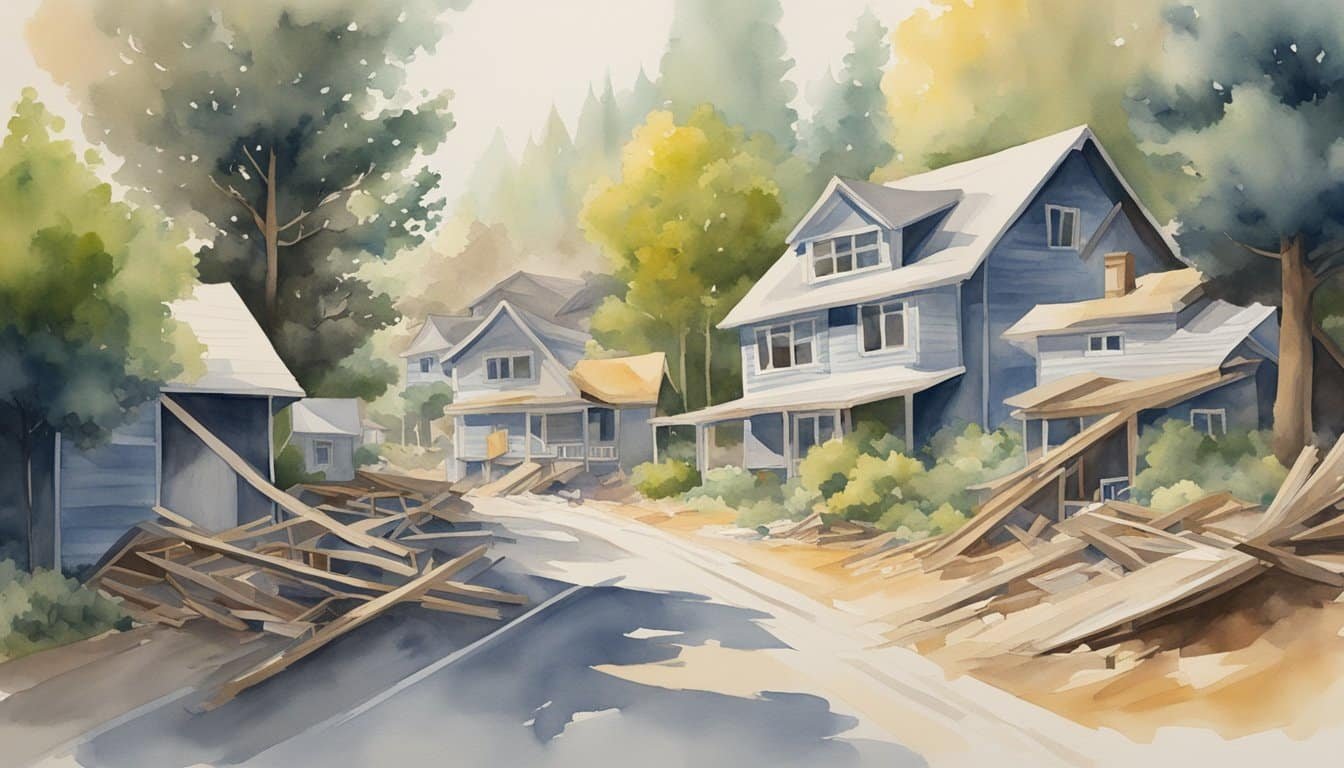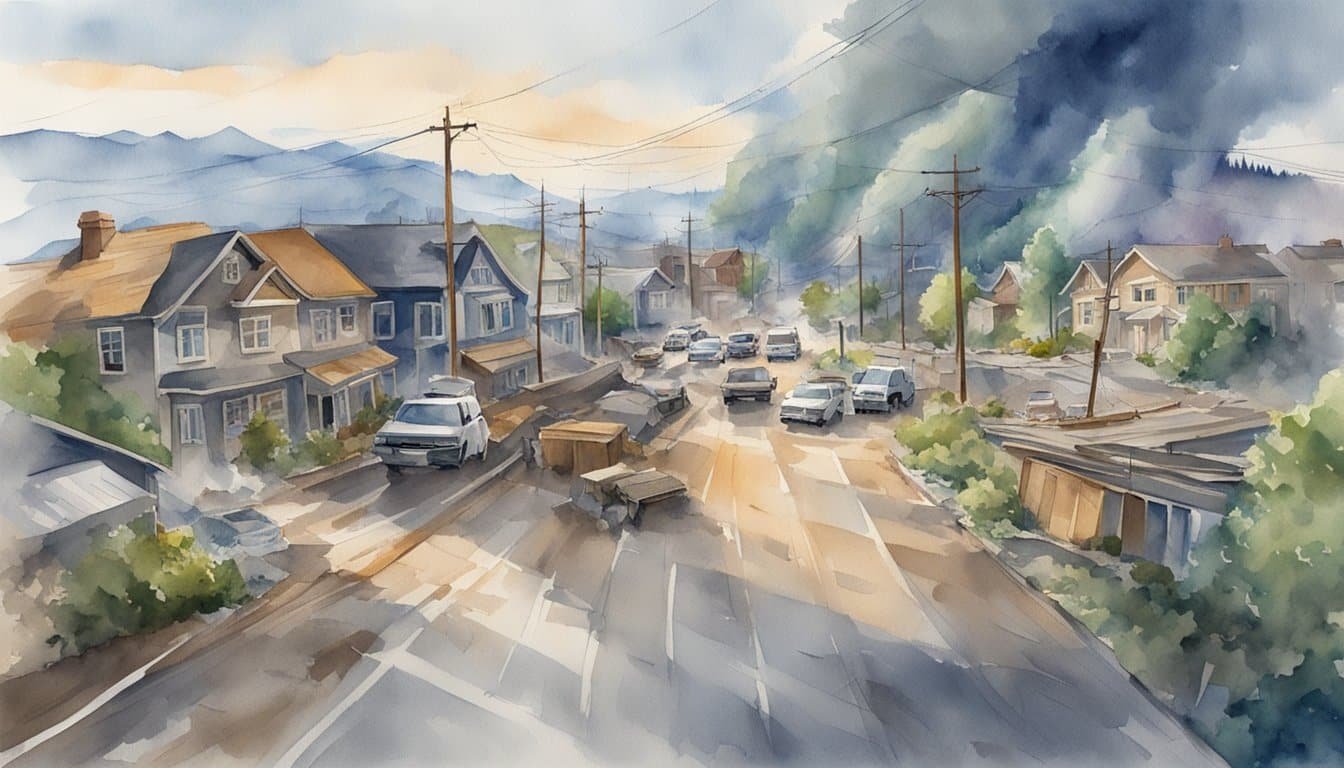Understanding Earthquakes in the Pacific Northwest
The Pacific Northwest is a region that’s no stranger to the ground shaking beneath its feet, where the meeting of colossal tectonic plates shapes the very land. Here’s a dive into the dynamic tectonic landscape and history of earthquakes that characterize this corner of North America.
Tectonic Overview
The Pacific Northwest’s seismic activity is largely defined by the Cascadia subduction zone, a massive fault where the Juan de Fuca Plate is being forced beneath the North American Plate. This subduction process is responsible for the region’s most powerful seismic events. The interaction of these plates not only leads to earthquakes but also plays a crucial role in the area’s topography and geologic features.
Historical Earthquakes
Over centuries, the Pacific Northwest has experienced a number of significant earthquakes. Notably, in the year 1700, a megathrust earthquake of estimated magnitude 8.7 to 9.2 occurred within the Cascadia subduction zone. This event not only affected the coastal regions but also sent a tsunami across the Pacific to Japan. Historical records and geological evidence like ghost forests and submarine landslide deposits provide a narrative of past seismic episodes, helping to shape our understanding of earthquake risk in this region.
Earthquake Preparedness and Response

In the face of the seismic threats that the Pacific Northwest encounters, preparedness and swift response are crucial. This section zeroes in on how early warning systems heighten readiness and the strategies emergency management adopts to safeguard communities from earthquake-related disasters.
Early Warning Systems
The implementation of ShakeAlert, an earthquake early warning system, across states like Washington, Oregon, and California signifies a significant leap in seismic safety. Operated collaboratively by the U.S. Geological Survey, University of Washington, University of Oregon, and the Pacific Northwest Seismic Network, this system provides seconds to tens of seconds of warning before earthquake shaking arrives. Though it might not sound like much, these precious seconds allow for protective actions such as automated stopping of trains to prevent derailment, halting of surgeries in hospitals to avoid potential mishaps, and giving individuals time to drop, cover, and hold on.
Emergency Management Strategies
FEMA’s involvement in the Pacific Northwest is central to developing robust emergency management strategies. They work tirelessly to strengthen community resilience against potential earthquakes and the subsequent risks of tsunamis and fires. Preparedness activities encompass creating evacuation routes, conducting public education on earthquake safety, and stockpiling supplies. Coordination among local authorities and scientists is key, ensuring that when the earth does shake, the West Coast can spring into action to minimize harm and recover swiftly.
Potential Earthquake Impact and Recovery

Recent studies have raised concerns about the consequences of a large-scale earthquake in the Pacific Northwest, particularly one originating from the Cascadia subduction zone. This fault, known for its capacity to generate powerful quakes, poses significant risks to the region.
Infrastructure Vulnerability and Resilience
Cities like Seattle, Tacoma, Portland, and Vancouver Island are poised on the Cascadia fault, a seafloor subduction zone capable of producing earthquakes of magnitude 9.0 or higher. The infrastructure resilience of internet frameworks in the Pacific Northwest is of particular concern, especially considering the region’s dependence on digital communications. Similarly, the potential for impacts on transportation systems is significant, with roadways, bridges, and ports at risk of substantial damage.
British Columbia and San Francisco, while not directly above the subduction zone, would experience secondary effects due to economic ties and shared infrastructure networks. The sediment layers within the subduction zone also indicate that seismic waves could be amplified, which would further challenge the structural robustness of regional infrastructure.
Economic and Human Impact
The economic and human impacts of an earthquake in this area are expected to be profound. The worst-case scenario could lead to disrupted services and a lengthy recovery process, causing widespread economic impact. Job losses, temporary displacements, and the threat to human life further underline the gravity of the situation. In terms of recovery, planning involves not only buildings and infrastructure but also psychological support, economic revitalization, and rebuilding community ties. The United States and Canada continue to invest in earthquake preparedness, with the hope of minimizing the inevitable challenges faced during recovery.

